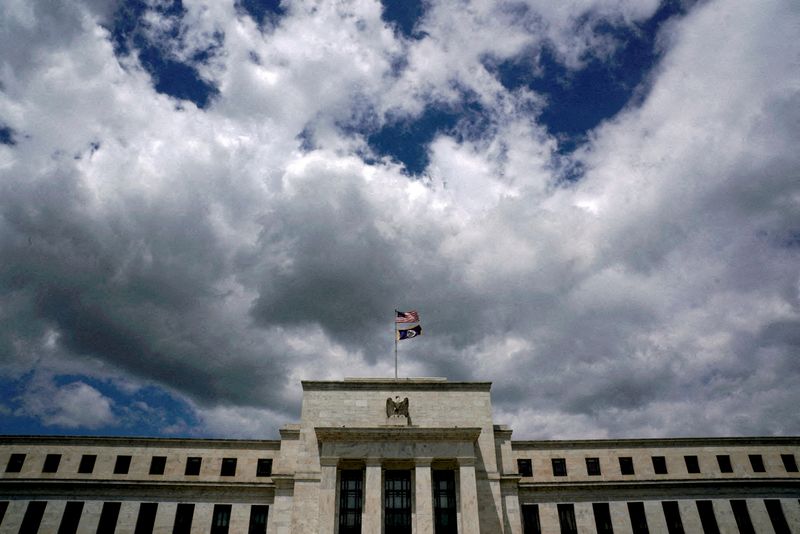By Howard Schneider
WASHINGTON (Reuters) -U.S. economic growth in the first quarter fell below the Federal Reserve’s estimates of the economy’s long-run potential for the first time in nearly two years, but the signs of slowing were accompanied with fast inflation that, if sustained, would pose a particular dilemma for the central bank.
Fed officials through much of their battle with a pandemic-driven breakout of inflation said it would take a period of below-trend growth to bring price pressures fully into line, and the 1.6% rate of expansion registered in the first quarter met that mark after a period where the economy grew faster than the central bank’s median 1.8% estimate of noninflationary potential.
But prices have remained sticky, with the data on Thursday also showing the personal consumption expenditures price index over the first quarter rising at a 3.4% annual rate versus the Fed’s 2% target.
Investors and analysts at first blush put more weight on the high inflation figure than on the signs the economy may finally be cooling as the Fed has expected.
Data from the CME Group’s (NASDAQ:CME) FedWatch tool showed the probability of an initial Fed rate cut slipping across the board, with a June cut now given less than 10% odds, bets on a September cut slipping below 58%, and a second cut in December given less than even odds.
There are reasons to think the 1.6% first-quarter growth rate overstates any weakness in the economy, said Nationwide Financial Market Economist Oren Klachkin, with sizeable drags from imports and inventories unlikely to persist through the year.
3rd party Ad. Not an offer or recommendation by Investing.com. See disclosure here or
remove ads
.
Meanwhile “inflation isn’t in a place where the Fed can be confident the 2% goal is within reach,” he said. “A higher-for- longer interest rate environment will likely prevail.”
The GDP result for the first quarter was a marked slowdown from the 3.4% annual rate seen at the end of 2023, and below economists’ expectations.
However demand remained strong, said EY Chief Economist Gregory Daco, with final sales to U.S. consumers growing 3.1% and a “better gauge of the underlying pace of economic activity” than a headline number that “missed expectations by a mile.”
The drag on growth from imports and inventories in fact echoes early 2022, when U.S. GDP fell through the first half of the year and triggered warnings of impending recession.
Both of those elements of GDP are volatile, and in the case of inventories weakness in one quarter often leads to strength later as companies sell down then restock.
In 2022, predictions of recession were followed by six quarters of above-trend growth.
The Fed will now have to look elsewhere – to jobs data, for example, and upcoming monthly reads on inflation – to determine if a real weakening is underway, and whether it will be followed by a renewed easing of price pressures that have come in faster than expected the last few months.
March monthly inflation data to be released on Friday will be dissected to see if the higher-than-expected quarterly outcome included in the GDP data translates into faster monthly inflation in March, or upward revisions to the numbers for January and February.
3rd party Ad. Not an offer or recommendation by Investing.com. See disclosure here or
remove ads
.
The April jobs report will be released a week from Friday.
Until there’s clarity on job growth, wage growth, and more data on prices, there may be little incentive for the Fed to change the message that rates are on hold.
“Softer-than-expected Q1 GDP growth but stronger-than-expected inflation presents an uncomfortable backdrop for Fed officials considering when to cut rates this year,” economists from Citi wrote, adding they expect “cracks in activity and labor market data” will still open the door to a rate reduction perhaps this summer.
The Fed holds its next policy meeting on April 30-May 1, with the policy rate expected to be left on hold in the current. 5.25% to 5.5% range set in July.
